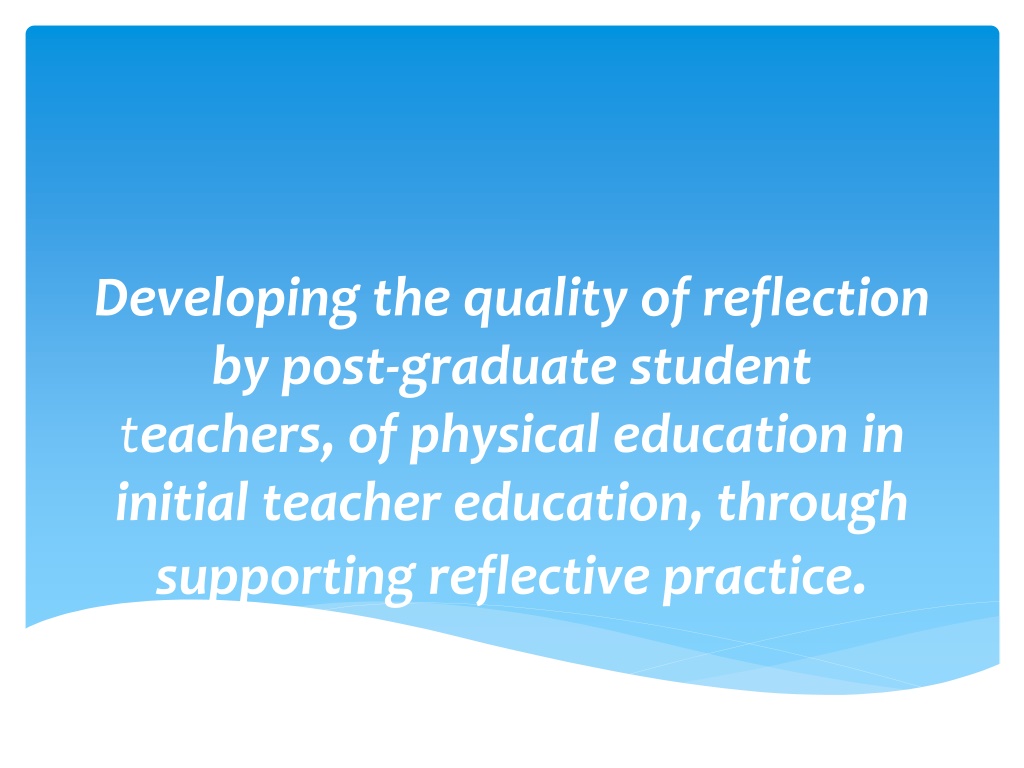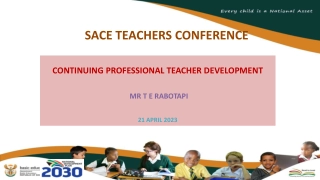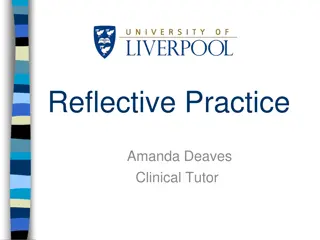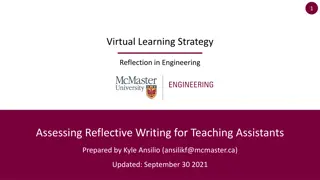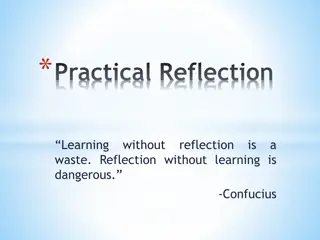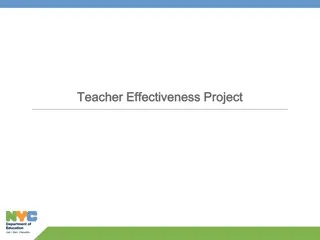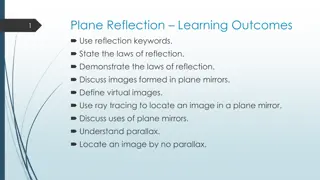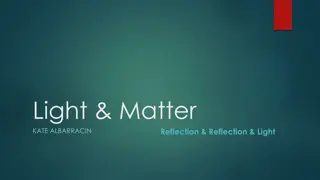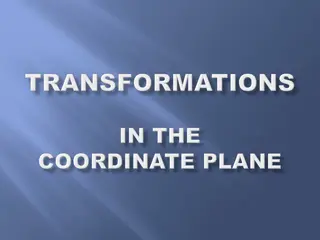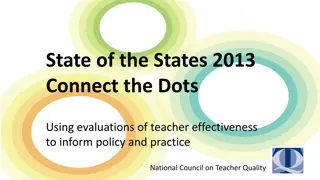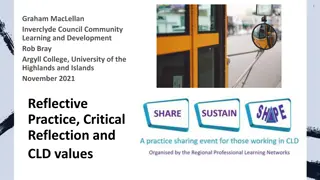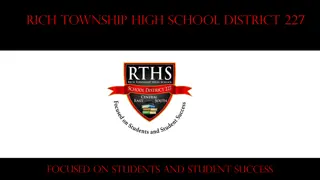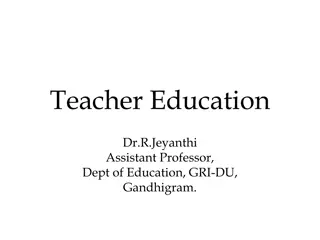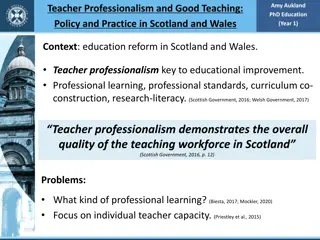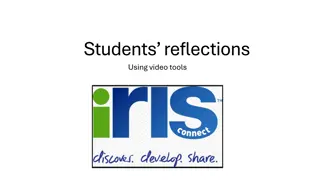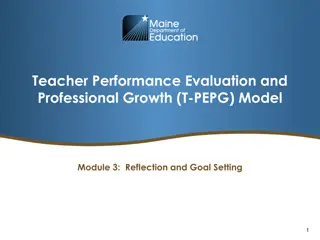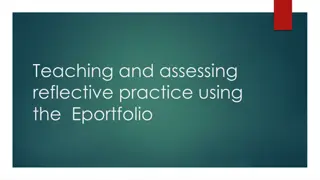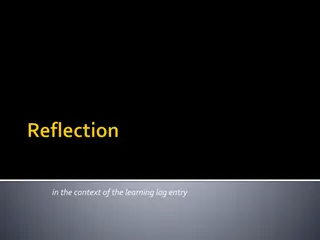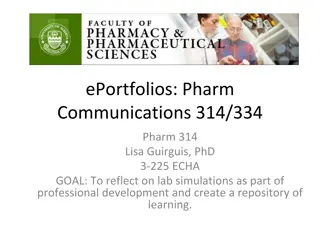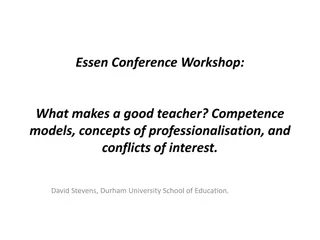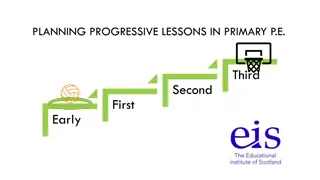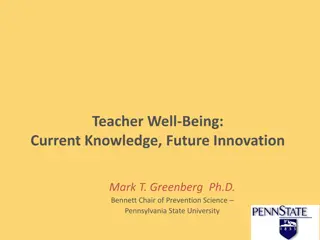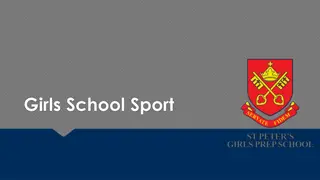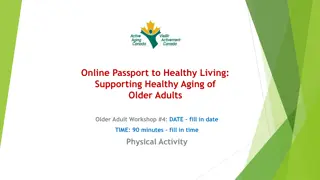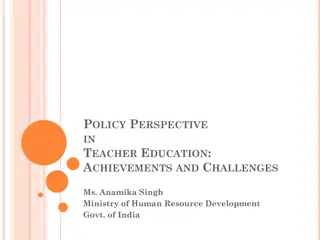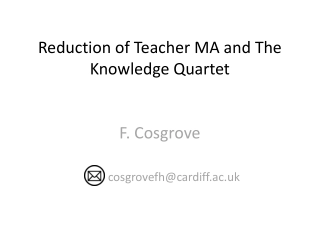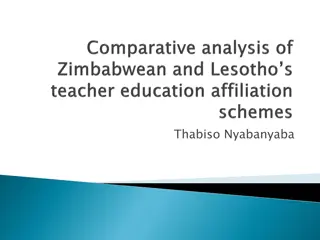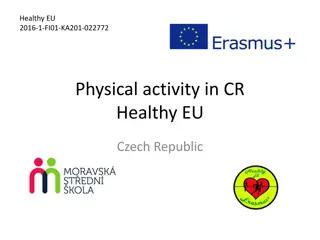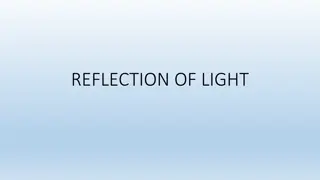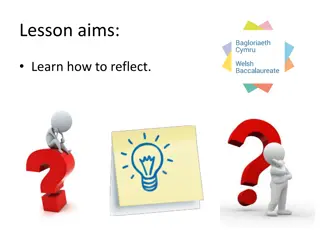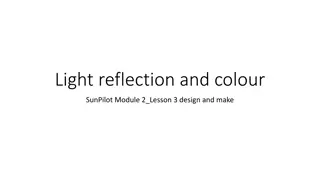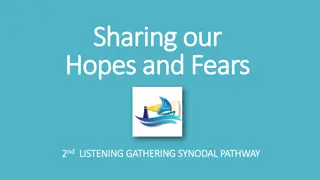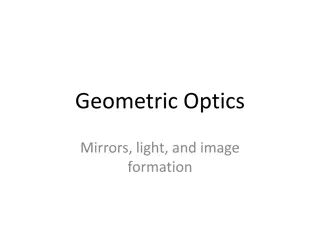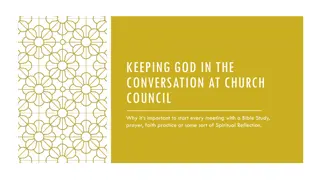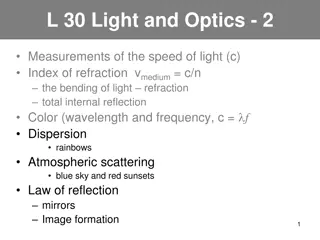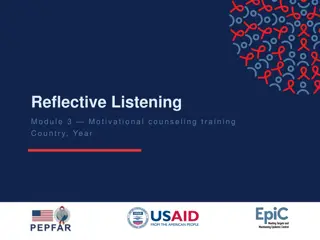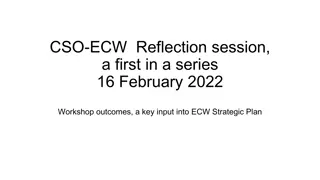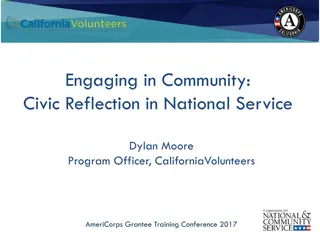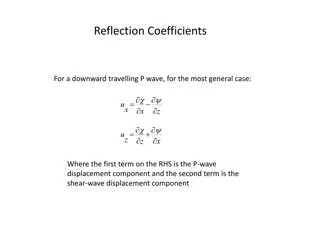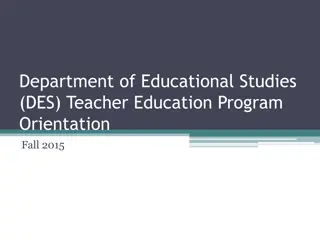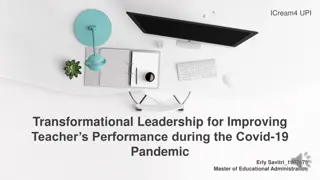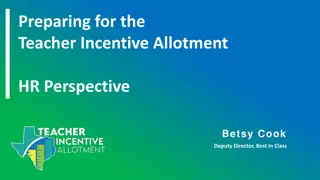Enhancing Reflection in Physical Education Teacher Education
Exploring the development of reflective practice in post-graduate student teachers of physical education through support and action research. The study delves into the challenges of learning to learn differently, drawing on Dewey's stages of learning and Bloom's taxonomy. Action learning projects were employed to improve teaching quality and awareness of student learning. The research involved PE students aged 22-23 in an initial teacher education program.
Download Presentation

Please find below an Image/Link to download the presentation.
The content on the website is provided AS IS for your information and personal use only. It may not be sold, licensed, or shared on other websites without obtaining consent from the author. Download presentation by click this link. If you encounter any issues during the download, it is possible that the publisher has removed the file from their server.
E N D
Presentation Transcript
Developing the quality of reflection by post-graduate student teachers, of physical education in initial teacher education, through supporting reflective practice.
As Coultas(2008) states: An effective teacher is a learner How do individuals become agents of change : an independent thinker who can learn from experience and make a difference?
Question: do student teachers have to learn to learn differently ? (most difficult for young PGCE students) Consideration Bloom s (1955) taxonomy of learning moving from knowledge and comprehension towards evaluation and synthesis
Dewey Dewey (1933) stages of learning were used as a starting point to explore reflection. Dewey s five stage model (suggestion, problem, hypothesis, testing and reflection) eventually became an analytic tool to interpret the data. Why Dewey ? (and not Kolb (1985), Moon (2004, 2008), Bloom (1955)).
Aim of the study In order to improve the quality of student learning I needed to be more aware of how novice teachers reflect. I introduced a reflective learning strategy to the PGCE year, used the learning activities to collect data, evaluated the data and altered the activities to the following cohort So I undertook an action learning project to increase my awareness of student learning
In order to improve my action learning: I undertook an action research project Involving a prior study (intervention one and evaluation one) followed by a main study (intervention two and evaluation two) It should be noted: The participants of the prior study were different from those of the main study It was not possible to give feedback to the research population but results were used to influence the next cohort of PGCE students.
Research population 13 participants PGCE PE students studying within one ITE provider All students were 22 23 years of age All students had progressed straight from an undergraduate degree
The three research questions were: To what extent (a consideration of levels) do student teachers demonstrate reflection through Dewey s stages of learning? How reflective learning activities impact (progression through the levels) on student teachers ability to reflect? To what extent do students use narrative to reflect?
action research project The interpretative approach generated qualitative data on the views and experiences of students during their teacher training. Dewey s (1933) framework used as an analytic tool (suggestion, problem, hypothesis, reasoning, testing) The data arose from the different reflective learning activities and subsequent interviews.
Intervention 1st- Reflective Learning strategy (prior study) (which included: focus groups, ALS, diaries, questionnaires) Conclusions drawn 2nd- Reflective Learning strategy (which included: discussion groups, ALS, journals, interviews) Data presented
Findings showed: Identified three levels of reflection Superficial engagement (description, mulling over , unjustified conclusions) Dewey reflection (using the five stages) Enhanced reflection (context, distance, ownership, power and emotion factors most relevant to PGCE students highlighted by the prior study)
Findings showed: All participants showed signs of superficial engagement comprising description, mulling over and unjustified conclusions five showed Dewey reflection with two demonstrating enhanced reflection (involving context distance, ownership, power and emotion) all participants used a full and coherent narrative to reconsider their experience.
Reflective Learning strategy Given the tools used in this study: ALS were the most effective for producing all three levels of reflection and a full and coherent narrative The use of narrative however made the stories personal with little distance or 3-D effect (Moon, 2008).
Conclusions: Three levels of reflection superficial engagement, mulling over , unjustified conclusions ITE need to consider pedagogical approach that enables reflection / CPD programmes need to be aware of the benefits of enhanced reflection Narrative is more evident than literature suggests ALS encourage oral narrative
Contribution to knowledge Three levels of reflection Pre-reflective stages (superficial engagement) are: Description, mulling over , unjustified conclusions. Student teachers highlight: power relationships in their reflection
Contribution to practice Use of narrative to promote pre-reflective stages Importance of the mentor in power role ALSs encourage oral reflection (but may prevent distance ) due to university based work with a peer group
Concerns Apprenticeship model of teacher training will take student teachers away from their peer group, therefore CPD will become even more important Written reflection (or oral reflection with NQTs or other students in the same school) may be the only way to reflect (but unsuccessful in this project)
Key texts: Boud, D. (2010) relocating reflection in the context of practice in H.Bradbury, N.Frost, S.Kilminster and M.Zukas (Eds) Beyond Reflective Practice, London: Routledge; pp 25 36 Clandinin, D. & Connelly, F (1988) in: Cortazzi, M. (1993) Narrative Analysis. Social Research and Educational Studies Series. London: Falmer Press. Dewey, J. (1933) How we think: A restatement of the relation of reflective Thinking to the Educative process. Lexington Heath and Co. Dewey, J. (1955) Experience and Education. New York: The Macmillan Co. Ghaye,A. and Ghaye, K. (1998) Teaching and Learning through Critical Reflective Practice. Oxon: Fulton Pub. Moon, J. (2005) Learning Journals. London: Routledge / Falmer. Moon, J. (2008) Critical Thinking. An Exploration of Theory and Practice. Abingdon, New York: Routledge. Moon, J. (2010) Reflection in Learning & professional Development. London & New York: RoutledgeFalmer.
